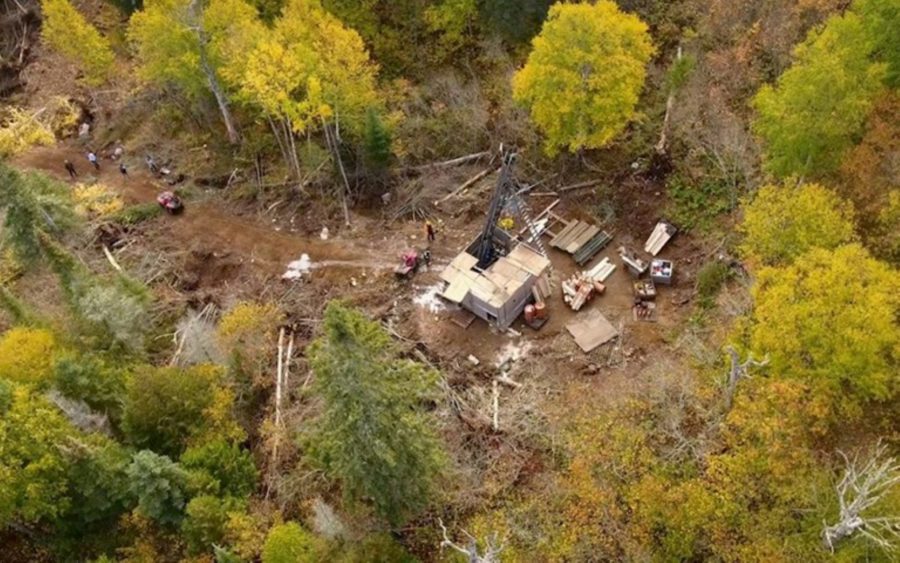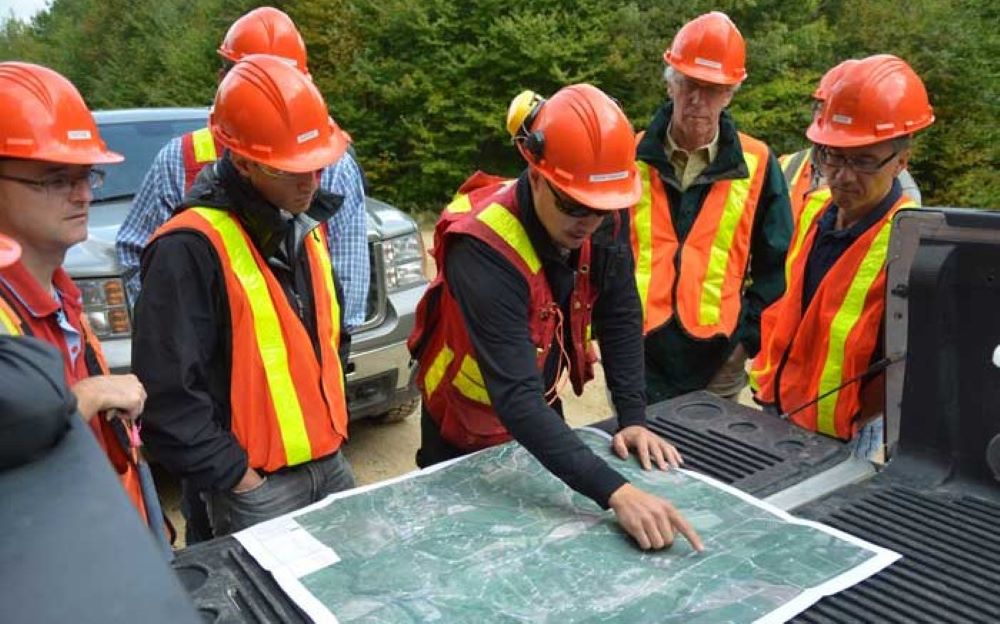Aerial sensing helps manage ground subsidence in mines
The rich deposits of potash that lie under the Saskatchewan prairie help provide fertilizer that boosts crop yields, yet the potential for subsidence of the underground workings is cause for concern; both for the mines themselves and for the above-ground environment.
Extraction is largely through mechanized mining, or solution mining, that results in large underground openings, and part of the risk to these methods of mining is to the workings themselves.
The evaporate deposits containing the ore do not provide the structural strength found in hard-rock mining, and gradual subsidence may make the workings unsafe for employees and equipment. Collapse, or threat of collapse, can render some parts of these mines unusable.
Above-ground risks due to subsidence and collapse include changes to watercourses and drainage patterns, with potentially severe environmental, economic and social consequences. Subsidence of underground mines also poses a threat to buildings, roads, railroads, airport runways and other structures. These risks apply not just to working mines, but to areas where operations have been discontinued.
The economic importance of potash mining in Saskatchewan, the worldwide need for the product to support food production, and the sheer size of the province’s resource (over a century’s worth of production and half the world’s resource, by some estimates) means that this subsidence problem needs a robust, dependable solution.
The government of Saskatchewan agrees, setting out requirements for mining companies to manage the threat of subsidence in their mine workings. Section 15(1)a of the Environmental Assessment Act states that a person shall not proceed with a development until Ministerial Approval has been received. It further sets requirements for a process of environmental impact assessment intended to inform the Minister of the potential impacts of a development prior to making a decision regarding the development.
Part of the answer is in finding reliable, cost-effective ways to detect small changes in topography above ground, allowing the government and private companies involved to take proactive action to shore up the underground workings.
Traditionally, this has been done through ground-based field surveys with theodolites and other such instruments. This labour-intensive approach meant that, in some cases, data was not collected frequently enough to provide early warning of subsidence. Also, the displacements have been measured only at limited individual instrumented stations, constraining the spatial continuous modeling of the deformations throughout the site.
A growing technology for detecting subsidence
These tools include LIDAR (LIght Detection And Ranging), a laser-based technology that can be utilized in both on-the-ground and airborne applications.
Airborne LIDAR has seen significant improvements in recent years. Earlier technology with 150 kHz pulse rates or less may have provided about 1.5 points per square metre; the current systems with more than 200 KHz pulse rate will provide higher point density and more chances to detect changes in topography. Vertical accuracies in the range of 10 to 15 cm for hardly reflective surfaces enable skilled operators to detect vertical movements of the order of decimeters. This means that small changes get noticed, with year-to-year trends raising a red flag for mining companies that further investigation of the workings may be needed.
Airborne LIDAR systems can acquire data for some ten square kilometres per hour, depending on the planned point density, flight altitude and aircraft speed. Global Positioning Satellite (GPS) technology helps determine the position of the aircraft accurately, so the instrumentation output can be correlated with what is on the ground. Inertial Measuring Unit (IMU) measures the pitch, roll and heading (yaw) of the aircraft, and this data is fed into the calculations.
More powerful computers able to quickly process the high volumes of data to produce usable information have helped to provide near or quasi real-time reports, allowing for action to be taken when the subsidence problem is still small and corrective action easier and less costly.
Current LIDAR technology is able to provide a “bare-earth” image of the earth’s surface, “seeing” through vegetation cover to the ground itself, resulting in an accurate reading no matter what the crop or other vegetation covering the area in question.
Airborne LIDAR can be supplemented by other imaging technology, including a combination of standard photography (Red-Green-Blue or “RGB” cameras) and Near Infrared (NIR) to provide an image of the ground. This is not only used for quality control of the LIDAR data, but the ground humidity extracted from Coloured Near Infrared imageries (CNIR) may give warning that high groundwater in an aquifer may pose a threat to the mine.
All of this data can be combined using current Geographic Information Systems (GIS) technology so that data can be overlain with surface drainage, human infrastructure such as roads and buildings, and the location of the mine workings to aid in seeing patterns and making decisions.
With airborne technology and good computer resources, it is practical and cost-effective to carry out surveys of active and closed mine sites on an annual basis. It is often best to do this at the same time each year, so that apples-to-apples comparisons can be made, given similar soil and atmospheric conditions and vegetation cover. LIDAR can be flown day or night, but there are limitations as it does not work above clouds or after a rain, and does best with leaf-off and snow-free grounds.
Since vertical accuracy in LIDAR’s current configuration is limited to 10-15 cm, for detecting movements of less than that, it is recommended to use other technologies such as dual frequency GPS or InSAR (Interferometric Synthetic Aperture Radar).
Wise use of current remote sensing technology, including LIDAR, can go a long way to safeguarding employees, equipment, the mine’s economic future and the surface environment from the risk of subsidence.
Remote-sensing technology is helping detect minute changes in topography that may indicate subsiding mine workings.
The Report provided by Azadeh Koohzare, Ph.D., P. Eng., is Project Manager Geodesy and Geomatics with McElhanney Consulting Services Ltd., based in Vancouver BC. Contact: 1.604.683.8521; akoohzare@mcelhanney.com. Leon C. Botham, MSCE, P.Eng. is Vice President, Mining with McElhanney Consulting Services Ltd., based in the Saskatoon SK office. Contact: 1.306.649.0740; lbotham@mcelhanney.com





Comments